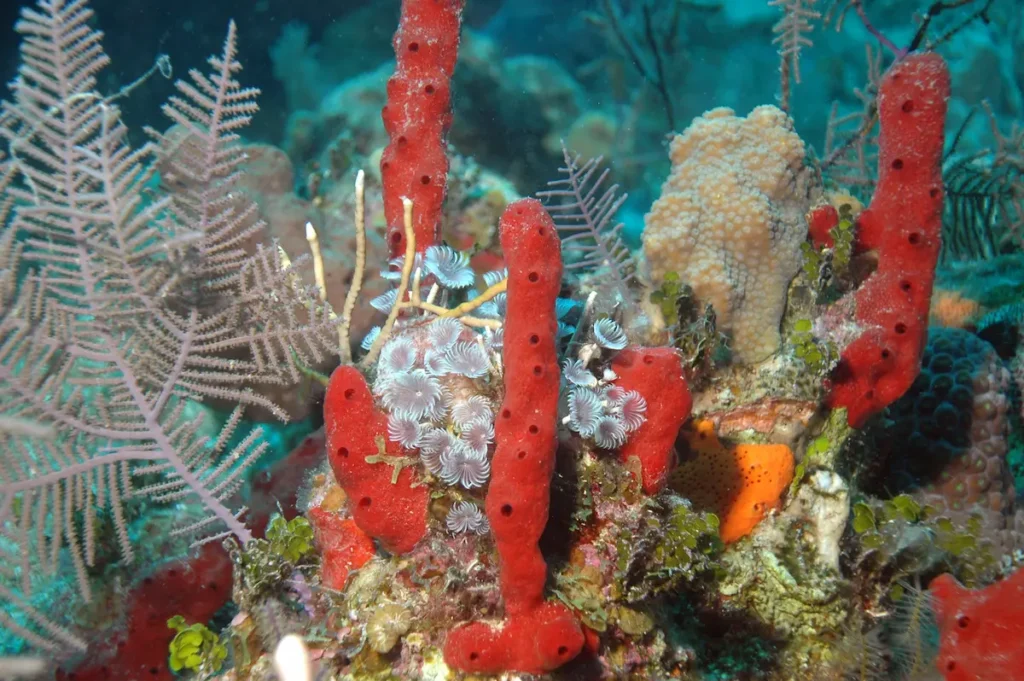At first, sea sponges appear to be some of the simplest inhabitants of our ocean. They may even seem dull when compared with some of our favorite ocean critters (besides the legendary Spongebob, of course). While they don’t possess many of the traits we picture when we think about ocean animals (such as hearts, faces or fins), a deep dive reveals that these organisms offer more than meets the eye.
They can be fluorescent.
Some ocean creatures, like the angler fish, are well known for their bioluminescence (the ability to emit light). But did you know that some sponges have this ability, too? Researchers have recently discovered a species of deep-sea sponges that glow. Why would only a few select species possess this characteristic? The sponges studied were pulled from crushing depths of more than 10,000 feet, and bioluminescence can be very handy in the dark deep sea. The researchers believe they developed this trait to lure in prey.
Love ocean content?
Enter your email and never miss an update
<!– –>
They can be carnivorous.
Sponges are sessile, meaning they stay in one place, and eat by filter feeding. They strain the water around them through their multiple pores, connected by canals, to capture nutrients and organic debris particles. This ability to filter the water surrounding them makes sponges important to coral reef ecosystems.
While humans need not fear being eaten by sea sponges, there are a couple of creatures that need to watch out. Sponges mostly eat bacteria and small food particles, but some species are carnivorous—only small crustaceans and other tiny plankton need to worry, however.
They are decontaminators.
This filtering is powerful! Sea sponges can draw in as much as 20,000 times their volume in water daily. As they filter through ocean water, they also filter out pollutants. This impact can even make its way to humans: For example, when sewage and pesticides enter the ocean, they can be consumed or absorbed by marine organisms, which are then eaten by fish. These fish are eaten by bigger fish, birds, land animals and, ultimately, humans. Sponges can help remove some of these pollutants before they can make their way up the food chain.

Some researchers are studying how to use sponges on a massive scale to help increase water quality in Europe and reduce pollution. Through lab experiments, they found one species of sponge in particular could filter lead.
They have medicinal qualities.
Scientists have discovered that sea sponges are a gold mine of biochemical compounds. They can alter their molecules, which results in the production of certainsubstances like proteins and fats. Most importantly, some mutate to create an incredibly useful building block similar to DNA called nucleosides. This matter can be harvested and used to create drugs that fight bacteria, viruses, fungi and inflammation.
This makes sea sponges a promising source of treatments! Some of the drugs created with chemicals found in sponges treat diseases like leukemia, lymphoma tumors and breast cancer. Others help treat chickenpox and shingles. In fact, the first drug approved by the Food and Drug Administration to treat HIV (and still used today) included nucleosides from sea sponges.

As you can see, sponges have unexpected characteristics and abilities and provide a plethora of benefits to society, both in and out of our ocean. Next time you are snorkeling, make sure you thank a sponge. You never know when the sponge might be of service to you.
The post Why Sponges are Underrated appeared first on Ocean Conservancy.

